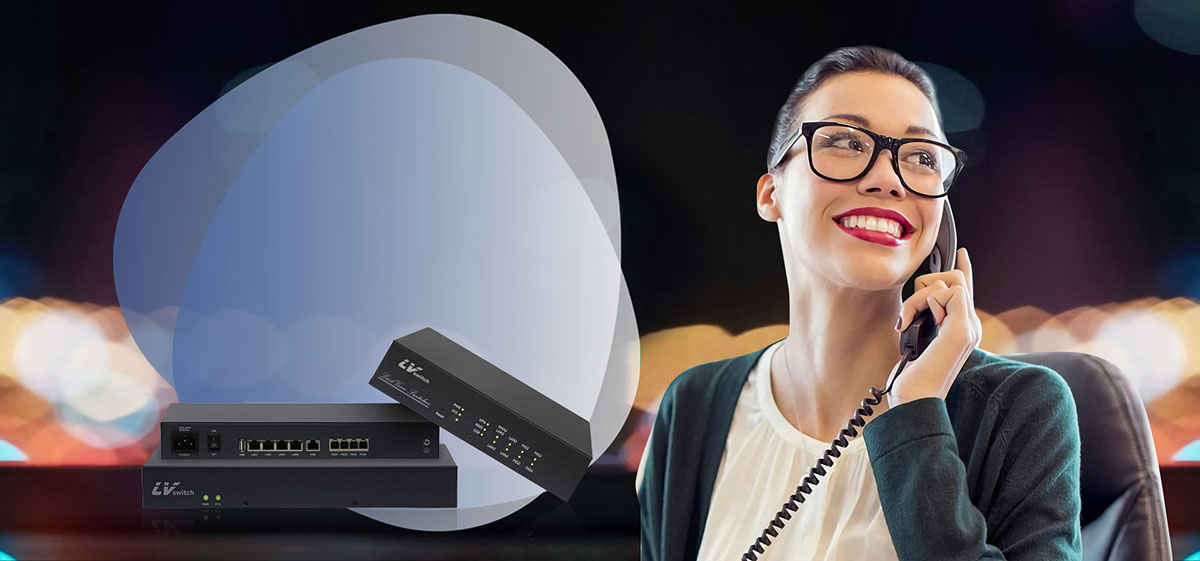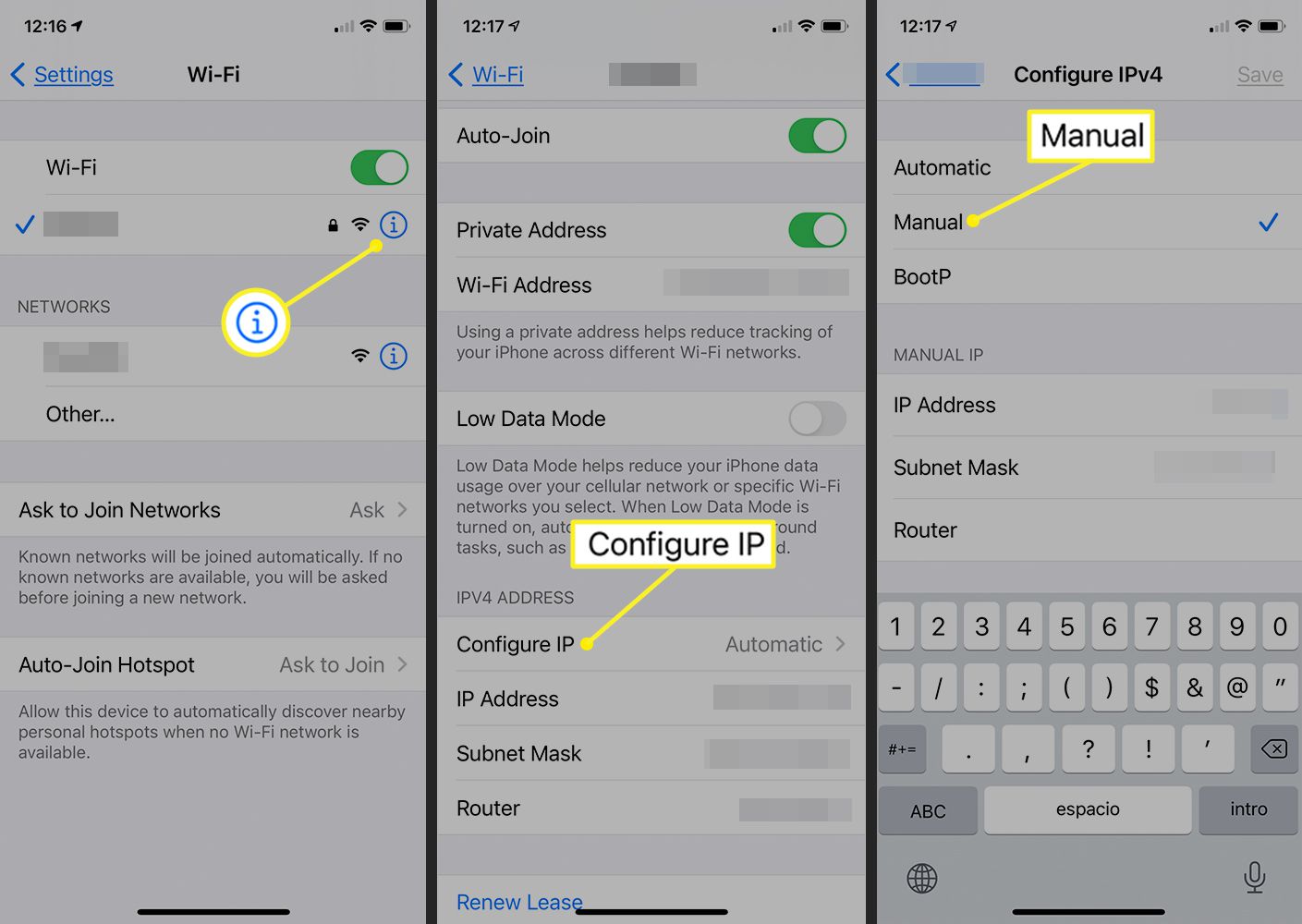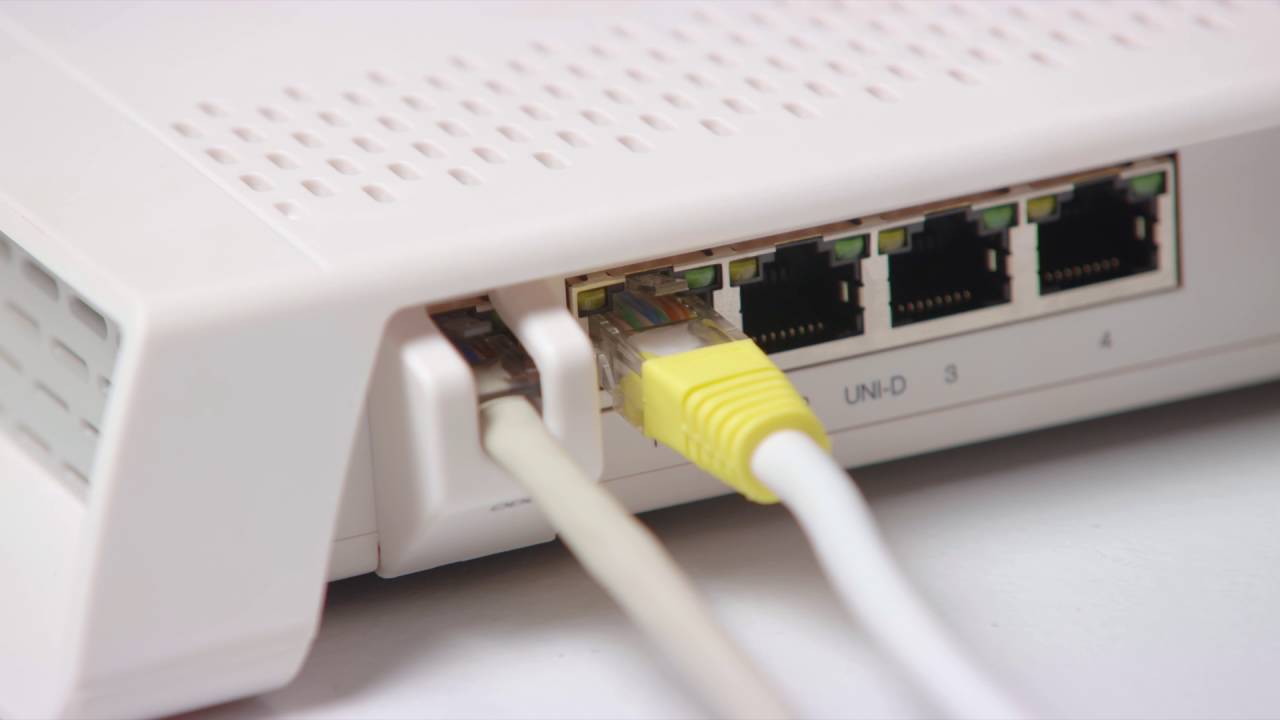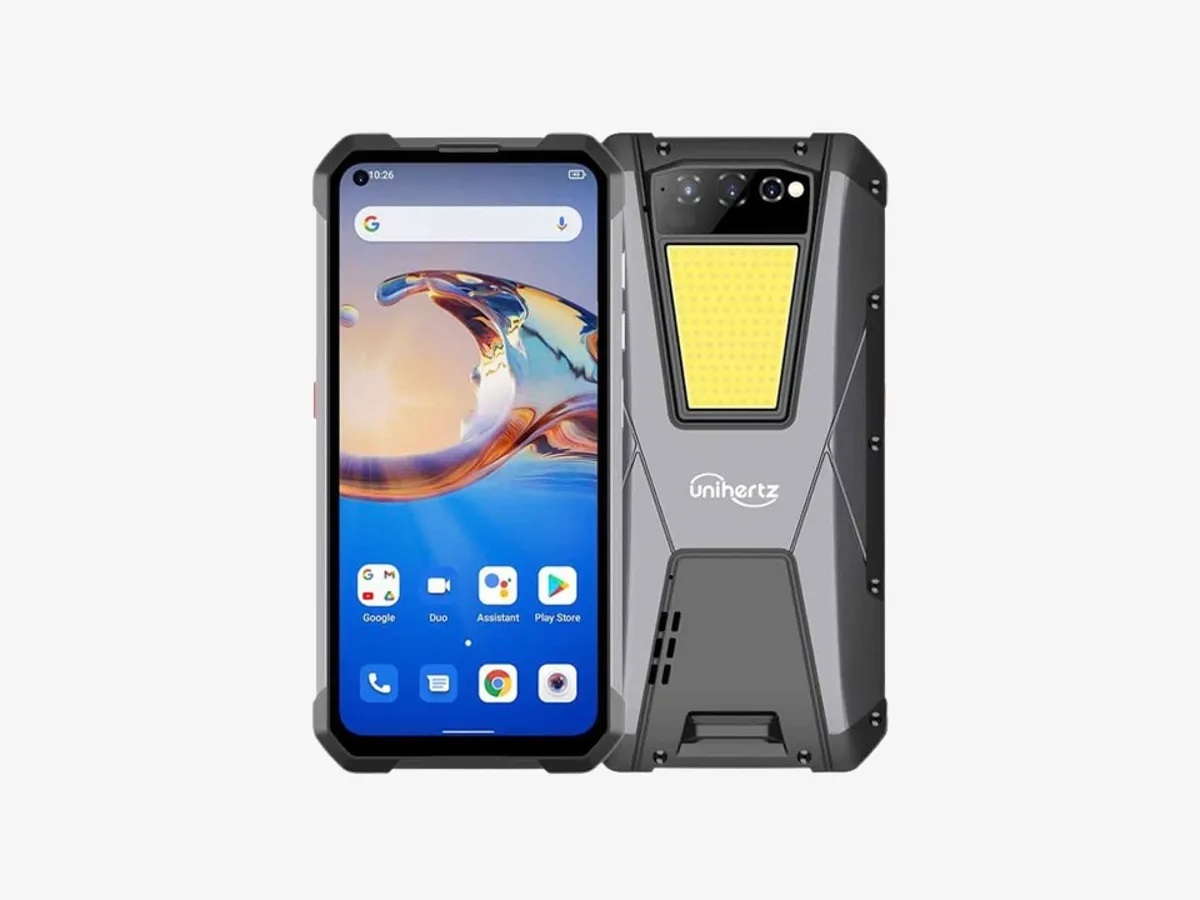What is an IP Phone
An IP (Internet Protocol) phone is a device that allows individuals to make telephone calls over the internet rather than using traditional landline networks. Also known as VoIP (Voice over Internet Protocol) phones, IP phones convert voice signals into digital data packets that are transmitted over the internet. These packets are then reassembled and converted back into voice signals at the receiving end, allowing real-time communication between users.
Unlike traditional phones, which rely on analog or digital signals transmitted through telephone lines, IP phones use the internet to establish connections. This enables users to make calls to anyone, anywhere in the world, as long as they have an internet connection.
IP phones offer a wide range of features and functionalities that enhance communication capabilities in a business setting. They often come equipped with advanced call management features like call forwarding, call waiting, voicemail, and conference calling, making it easier for users to handle multiple calls simultaneously.
Furthermore, IP phones can integrate seamlessly with other communication technologies, such as video conferencing systems and unified communications platforms, allowing for a more integrated and efficient communication experience. They are also compatible with various software applications, like CRM (Customer Relationship Management) systems, for enhanced productivity and customer service.
With the increasing popularity of remote work and the need for flexible business communications, IP phones have become an essential tool for companies of all sizes. They provide cost-effective solutions for both local and international calling, eliminating the need for multiple phone lines and reducing long-distance charges.
In addition to their cost-efficiency, IP phones offer superior call quality, reliability, and scalability. With the ability to handle multiple simultaneous calls and support for various codecs, IP phones ensure crystal clear voice quality, minimizing disruptions and dropped calls.
Overall, IP phones have revolutionized the way businesses communicate by providing a flexible, cost-effective, and feature-rich alternative to traditional telephone systems. As technology continues to evolve, IP phones are expected to become even more sophisticated, offering improved integration capabilities and advanced functionalities.
How does an IP Phone work?
An IP (Internet Protocol) phone works by converting voice signals into digital data packets that are transmitted over the internet. This process involves several steps to enable real-time communication between users.
When a user makes a call on an IP phone, the voice signals are captured by the microphone and converted into digital data. This data is then compressed and divided into smaller packets for efficient transmission.
Next, the IP phone uses a signaling protocol, such as SIP (Session Initiation Protocol), to establish a connection with the recipient’s device or the VoIP service provider. The signaling protocol carries information about the call, including the source and destination IP addresses.
Once the connection is established, the IP packets containing the voice data are transmitted over the internet. These packets travel through various routers and switches, each of which determines the optimal path for data transmission based on factors like network congestion and latency.
At the receiving end, the IP packets are collected and reassembled into a continuous stream of data. The data is then decompressed and converted back into analog voice signals, which are amplified and played through the speaker of the recipient’s IP phone or computer.
During the call, IP phones continuously monitor the quality of the voice signals and adjust parameters, such as the codec used for compression, to ensure optimal call quality. Some IP phones also support features like echo cancellation and noise reduction to further enhance the audio clarity.
IP phones can be connected to the internet through various methods, including Ethernet cables, Wi-Fi, or mobile data networks. They can be standalone devices, resembling traditional phones, or software-based applications that run on computers or mobile devices.
Overall, the functioning of an IP phone relies on the convergence of telecommunication and internet technologies. By leveraging the power of the internet, IP phones offer a cost-effective and flexible solution for modern communication needs.
Benefits of using an IP Phone
Using an IP (Internet Protocol) phone offers several significant benefits for individuals and businesses alike. Let’s explore some of the key advantages of using an IP phone:
1. Cost Savings: One of the primary benefits of IP phones is cost savings. IP phone systems utilize the internet to transmit voice data, eliminating the need for traditional phone lines and associated costs. International calls are significantly cheaper, and organizations can consolidate their communication expenses by integrating voice and data networks.
2. Flexibility and Mobility: IP phones offer incredible flexibility and mobility. Users can make and receive calls from anywhere with an internet connection, enabling remote work and business continuity. IP phone systems also support features like call forwarding and simultaneous ringing, ensuring that important calls are never missed, even when on the go.
3. Advanced Features: IP phones come with a wide array of advanced features that enhance communication efficiency. These features include voicemail, call waiting, call transfer, auto-attendant, conference calling, and more. Additionally, IP phone systems can integrate with other communication tools like video conferencing and instant messaging, further enhancing collaboration.
4. Scalability: IP phone systems are highly scalable, allowing organizations to easily add or remove phone lines as needed. This scalability makes IP phones suitable for small businesses as well as large enterprises, providing the flexibility to adapt to changing communication needs.
5. Enhanced Call Quality: IP phone systems deliver superior call quality compared to traditional phone lines. With advancements in technology and the use of efficient voice codecs, IP phones offer clear and crisp voice communication, minimizing any distortions or disruptions.
6. Integration with Business Applications: IP phones can seamlessly integrate with various business applications, such as customer relationship management (CRM) systems. This integration allows for click-to-dial functionality and automated call logging, streamlining business processes and enhancing productivity.
7. Centralized Management: IP phone systems provide centralized management, allowing network administrators to easily configure and monitor phone settings. This ensures consistent and efficient administration of the phone system, minimizing maintenance efforts and costs.
8. Eco-Friendly: As IP phones use digital data packets for communication, they contribute to environmental sustainability by reducing the carbon footprint associated with traditional phone systems. By eliminating the need for physical phone lines and reducing paper usage through voicemail and digital communication, IP phones promote eco-friendly practices.
In summary, the benefits of using an IP phone are numerous, including cost savings, flexibility, advanced features, scalability, enhanced call quality, integration capabilities, centralized management, and eco-friendliness. With these advantages, IP phones have become an essential communication tool for businesses looking for efficient and cost-effective communication solutions.
Features of an IP Phone
An IP (Internet Protocol) phone offers a range of features that enhance communication capabilities and improve productivity. Let’s explore some of the key features commonly found in IP phones:
1. Call Management: IP phones provide advanced call management features such as call hold, call transfer, call forwarding, and three-way calling. These features allow users to handle calls efficiently and effectively, ensuring smooth communication.
2. Voicemail: IP phones typically come with built-in voicemail capabilities. Users can receive and listen to voicemail messages directly on the IP phone or access them remotely. Voicemail features often include options to customize greetings, voice-to-text transcriptions, and email notifications.
3. Caller ID and Call Waiting: IP phones support caller ID, enabling users to see the name and number of incoming callers. Additionally, call waiting allows users to receive and switch between multiple incoming calls, ensuring that no important calls are missed.
4. Conference Calling: IP phones enable conference calling, allowing users to connect multiple participants in a single call. This feature is particularly beneficial for team collaboration, remote meetings, and client interactions, as it eliminates the need for separate conference room setups.
5. Speed Dial and Phonebook: IP phones offer speed dial and phonebook features that allow users to store and quickly dial frequently used numbers. This simplifies the calling process and saves time, particularly for users who frequently communicate with specific contacts.
6. Call History: IP phones keep track of call history, displaying the details of incoming, outgoing, and missed calls. Users can easily access call logs to review or return calls, providing a convenient way to track communication activity.
7. Redial: IP phones offer a redial feature that allows users to quickly dial the most recent outgoing number, eliminating the need to manually enter the number again.
8. Interactive Display: Many IP phones feature interactive displays, which provide a user-friendly interface for accessing various phone settings and features. These displays often support customizable widgets, allowing users to personalize their phone screens for quick access to preferred features.
9. HD Audio: IP phones support high-definition (HD) audio, delivering crystal-clear voice quality during calls. This ensures that users can effectively communicate without any distortion or background noise, enhancing overall call clarity.
10. Integration with Other Systems: IP phones can integrate with various business applications, such as customer relationship management (CRM) systems and unified communications platforms. This integration enables seamless access to contact information, call histories, and the ability to directly make calls from other software applications.
11. Programmable Keys: Many IP phones have programmable keys that can be customized to perform specific functions. These keys can be used for speed dialing, call handling, navigation shortcuts, or accessing frequently used features, increasing efficiency and productivity.
In summary, IP phones offer a range of features that streamline communication, enhance collaboration, and improve efficiency. With capabilities such as call management, voicemail, caller ID, conference calling, and integration with other systems, IP phones enable users to communicate effectively in today’s fast-paced business environment.
Comparison between IP Phone and Traditional Phone
When it comes to choosing a phone system for your business or personal use, there are two main options: IP (Internet Protocol) phones and traditional phones. Let’s compare the two to understand their key differences:
1. Connectivity: A traditional phone connects to the telephone network through copper wires or fiber optic cables, while an IP phone connects to the internet using Ethernet cables, Wi-Fi, or mobile data networks. IP phones utilize the power of the internet to transmit voice data, allowing for wider connectivity options and remote accessibility.
2. Call Quality: IP phone systems often deliver superior call quality compared to traditional phone lines. With advancements in technology and the use of efficient voice codecs, IP phones offer clearer and more reliable voice communication, reducing background noise and minimizing disruptions during calls.
3. Cost Efficiency: IP phones are generally more cost-effective than traditional phones. They eliminate the need for separate telephone lines and long-distance charges, as calls are transmitted over the internet. Additionally, IP phone systems offer features like conference calling and call forwarding without incurring extra costs.
4. Mobility: IP phones provide greater mobility compared to traditional phones. With an IP phone, users can make and receive calls from anywhere with an internet connection, enabling remote work and flexible communication. Traditional phones, on the other hand, are usually limited to a specific physical location.
5. Advanced Features: IP phones offer a wide range of advanced features that enhance communication efficiency, such as call forwarding, voicemail, call waiting, and conference calling. Traditional phones may have limited features, often restricted to basic call functions and voicemail.
6. Scalability: IP phone systems are highly scalable, allowing organizations to easily add or remove phone lines as needed. Traditional phone systems may require additional infrastructure and wiring to accommodate changes, making scalability a more complex and costly process.
7. Integration Capabilities: IP phones can seamlessly integrate with other communication technologies and business applications, such as video conferencing systems and CRM software. This integration enhances collaboration and improves workflow efficiency. In contrast, traditional phones may have limited integration options.
8. Reliability and Redundancy: Traditional phone systems often have built-in redundancies and backup power systems, ensuring communication even during power outages or emergencies. IP phone systems rely on stable internet connectivity, which may present challenges in areas with unreliable or limited internet access.
9. Maintenance and Support: Traditional phone systems usually require dedicated technicians for maintenance and repair, whereas IP phone systems can be managed remotely and often come with user-friendly interfaces for easy troubleshooting and configuration.
10. Environmental Impact: IP phones contribute to environmental sustainability by reducing the need for physical phone lines, paper usage through voicemail, and carbon emissions associated with traditional infrastructure.
In summary, IP phones offer significant advantages over traditional phones in terms of connectivity, call quality, cost efficiency, mobility, advanced features, scalability, integration capabilities, and environmental impact. However, it’s crucial to consider factors like internet reliability and infrastructure requirements when deciding which phone system best suits your needs.
Types of IP Phones
IP (Internet Protocol) phones come in various types and models, each offering unique features and functionalities. Let’s explore some of the common types of IP phones available in the market:
1. Desktop IP Phones: Desktop IP phones are the most common type of IP phone. They resemble traditional desk phones and are designed for use on a desk or work surface. These phones often feature an LCD display, programmable buttons, and a speakerphone function for hands-free communication. They offer a wide range of features and are suitable for office environments.
2. Wireless IP Phones: Wireless IP phones, also known as Wi-Fi phones, provide the flexibility of mobility within the coverage range of a Wi-Fi network. These phones connect to the internet wirelessly, allowing users to make and receive calls without being tethered to a specific location. Wireless IP phones are particularly useful in environments where mobility is essential, such as warehouses, hospitals, or large office campuses.
3. Softphones: Softphones are software applications that run on computers, smartphones, or tablets, turning these devices into virtual IP phones. They utilize the device’s microphone, speaker, and internet connectivity to enable voice communication. Softphones are a cost-effective option as they eliminate the need for dedicated hardware, making them suitable for remote workers, freelancers, or individuals on the go.
4. Conference IP Phones: Conference IP phones are specifically designed for audio conferencing and collaboration. These phones typically feature advanced audio technology with multiple microphones and speakers to ensure clear and immersive conference calls. They often include features like call recording, echo cancellation, and noise reduction to optimize the conference calling experience.
5. Video IP Phones: Video IP phones integrate video conferencing capabilities into the traditional IP phone functionality. These phones come equipped with an LCD display and a built-in camera, allowing users to engage in face-to-face video communication along with voice calls. Video IP phones facilitate virtual meetings, remote collaboration, and improved visual communication.
6. DECT IP Phones: DECT (Digital Enhanced Cordless Telecommunications) IP phones combine the features of a traditional cordless phone with IP phone capabilities. They provide the freedom of mobility within a designated coverage area, typically within an office or home environment. DECT IP phones offer the convenience of cordless communication while utilizing the benefits of an IP phone system.
7. Touchscreen IP Phones: Touchscreen IP phones feature a user-friendly touchscreen interface, similar to smartphones or tablets. These phones offer a highly intuitive and interactive experience, allowing users to navigate menus, access phone features, and initiate calls with ease. Touchscreen IP phones often come with integrated applications, customization options, and enhanced user experiences.
8. Specialty IP Phones: There are also specialty IP phones available that cater to specific industries or use cases. For example, there are ruggedized IP phones designed for harsh environments, hospitality IP phones with specialized features for hotels, and healthcare IP phones with features compliant with medical environments.
It’s important to consider the specific communication needs and requirements of your organization or personal use when choosing the type of IP phone that best suits your needs. Each type of IP phone offers unique features, capabilities, and form factors to enhance communication and productivity.
Choosing the Right IP Phone for Your Business
When selecting an IP (Internet Protocol) phone for your business, there are several factors to consider to ensure you choose the right one that meets your communication needs. Here are some key considerations to help you make an informed decision:
1. Features and Functionality: Evaluate the features and functionalities offered by different IP phone models. Consider the specific needs of your business, such as call management features, voicemail capabilities, conference calling, integration options, and scalability. Make a list of the essential features you require to narrow down your options.
2. Scalability: Consider the future growth and scalability of your business. Choose an IP phone system that can easily accommodate additional lines and extensions as your business expands. Scalability is crucial to avoid the need for frequent upgrades or system replacements.
3. Compatibility and Integration: Assess the compatibility of the IP phone system with your existing communication infrastructure and software applications. Ensure that the IP phones can integrate with your preferred unified communications platform, CRM system, and other business tools to streamline communication and collaboration.
4. User-Friendliness: Consider the user-friendliness of the IP phones. Look for phones with intuitive interfaces, clear displays, and easy navigation. User-friendly IP phones minimize the learning curve for employees, reducing the need for extensive training and increasing overall productivity.
5. Call Quality and Connectivity: Evaluate the call quality provided by different IP phone models. Look for phones that support HD audio and noise reduction technologies for clear and uninterrupted communication. Consider the connectivity options available, such as Ethernet, Wi-Fi, or DECT, and choose the one that best suits your office layout and requirements.
6. Budget: Determine your budget for IP phone systems and look for options that offer the best value for money. Consider the upfront costs of the IP phones, any licensing or subscription fees, as well as ongoing maintenance and support expenses.
7. Vendor Reputation and Support: Research the reputation of the IP phone vendor and their level of customer support. Read customer reviews, testimonials, and case studies to gauge the vendor’s reliability, responsiveness, and commitment to customer satisfaction.
8. Ergonomics and Design: Consider the ergonomic design of the IP phones. Look for features like adjustable stands, backlit buttons, and comfortable handset grips. Ergonomically designed IP phones reduce strain and fatigue during prolonged use, increasing user comfort and productivity.
9. Security: IP phone systems should have robust security measures in place to protect your communication channels and sensitive data. Look for phones that support encryption protocols, secure provisioning, and authentication mechanisms to safeguard your business communications.
10. Warranty and Support: Consider the warranty and support offered by the IP phone vendor. Look for comprehensive warranty coverage and responsive technical support to address any issues or concerns that may arise during usage.
By carefully evaluating these factors, you can choose the right IP phone system that aligns with your business requirements, enhances communication capabilities, and supports the growth and success of your organization.
Setting up an IP Phone System
Setting up an IP (Internet Protocol) phone system requires careful planning and configuration to ensure seamless communication within your organization. Here are the key steps to follow when setting up an IP phone system:
1. Assess Your Network Infrastructure: Evaluate your existing network infrastructure to ensure it can handle the additional demand of IP phones. Assess network bandwidth, quality of service (QoS) settings, and network security protocols to ensure a stable and secure environment for your IP phone system.
2. Choose an IP Phone Solution: Select a suitable IP phone solution that meets your communication needs and budget. Consider factors such as the number of users, required features, scalability, and integration capabilities. Consult with vendors or experts to determine the most appropriate IP phone system for your organization.
3. Install and Configure IP Phones: Install and configure the IP phones according to the manufacturer’s guidelines. Connect the IP phones to the network using Ethernet cables, Wi-Fi, or DECT connections, depending on the phone model and network setup. Set up the necessary network settings, such as IP addresses and subnet masks, for each phone.
4. Provision User Accounts: Create user accounts for each employee or user who will be using an IP phone. Assign unique extensions or phone numbers to each user to enable internal and external communication. Set up voicemail accounts and configure user preferences such as call forwarding and call transfer settings.
5. Configure Call Routing: Determine how calls will be routed within your organization. Configuring call routing involves setting up auto-attendants, call groups, and call queues to manage incoming calls efficiently. Define call routing rules based on working hours, employee availability, and specific departmental requirements.
6. Implement Security Measures: Protect your IP phone system from potential security threats. Enable encryption protocols, secure login credentials, and firewall settings to protect against unauthorized access and eavesdropping. Regularly update firmware and software patches to ensure the latest security safeguards are in place.
7. Integrate with Existing Systems: Integrate your IP phone system with other communication and business applications, such as CRM systems or unified communications platforms. This integration enhances productivity and streamlines workflows by allowing users to access contacts, call histories, and other relevant information within a single interface.
8. Test and Train Users: Conduct thorough testing of your IP phone system before deploying it to end-users. Ensure that calls are successfully routed, voicemail functions properly, and features operate as intended. Provide comprehensive training to employees on how to use the IP phones effectively and maximize the available features.
9. Monitor and Maintain: Regularly monitor and maintain your IP phone system to ensure optimal performance. Keep track of call quality, review call logs, and address any issues promptly. Perform routine maintenance tasks such as updating firmware, backing up configurations, and monitoring network traffic to ensure efficient operation.
10. Provide Ongoing Support: Establish a support system to address user inquiries, troubleshoot technical issues, and provide ongoing assistance. Maintain a good relationship with your IP phone vendor for continued support and upgrades as needed.
By following these steps, you can efficiently set up an IP phone system that improves communication, enhances productivity, and meets the specific needs of your organization.
Common Issues and Troubleshooting Tips for IP Phones
While IP (Internet Protocol) phones offer numerous benefits, they may encounter common issues that can hinder their performance. Understanding these issues and knowing how to troubleshoot them can help ensure smooth operation and uninterrupted communication. Here are some common issues and troubleshooting tips for IP phones:
1. No Dial Tone: If you are not hearing a dial tone, first check the physical connections of the IP phone to ensure it is properly connected to the network or power source. If the connections are fine, try rebooting the phone or resetting its network settings to resolve any connectivity issues.
2. Poor Call Quality: If you are experiencing poor call quality, it may be caused by network congestion, low bandwidth, or interference. Check your network connection and ensure that there are no other bandwidth-intensive applications or devices simultaneously using the network. You can also try using a wired connection instead of Wi-Fi to improve call quality.
3. Echo or Feedback: If you or the person you are speaking with hears echo or feedback during calls, it may be due to microphone or speaker placement or network latency. Ensure that the microphone and speaker are positioned correctly and not too close to each other. If the issue persists, it may be necessary to adjust network settings or consult with your network administrator.
4. Call Dropping or Disconnections: If your calls frequently drop or disconnect, it might be related to network instability or inadequate bandwidth. Check the network connection and consider upgrading your internet plan or router settings to ensure a stable connection. Additionally, make sure your IP phone firmware is up to date, as outdated software may cause connectivity issues.
5. Unable to Make or Receive Calls: If you are unable to make or receive calls, verify that your IP phone is correctly provisioned and registered with the IP phone system. Check the network settings and confirm that the IP phone has a valid IP address. If all settings appear correct, contact your IP phone system administrator for further assistance.
6. Audio or Display Issues: If you encounter audio problems like distorted or muffled sound, or if the display screen is not functioning properly, try restarting the IP phone to refresh the settings. If the issue persists, verify the audio settings and adjust them accordingly. In case of persistent display issues, consult the phone’s user manual or contact technical support for guidance.
7. Voicemail Problems: If you are experiencing issues with voicemail, such as being unable to access or retrieve messages, check the voicemail settings on the IP phone. Ensure that the correct voicemail number or extension is programmed. If the issue persists, contact your IP phone system administrator or service provider for assistance.
8. Firmware or Software Updates: Regularly check for firmware or software updates for your IP phone. These updates often include bug fixes and feature enhancements that can address known issues and improve overall performance. Ensure that you have the latest firmware installed to avoid potential problems.
9. Power Supply Problems: If your IP phone is not turning on or experiencing power-related issues, check the power source and connections. Ensure that the power adapter is correctly plugged in, and there is no damage to the power cord. If necessary, try using a different power outlet or adapter to isolate the issue.
10. Seek Technical Support: If you encounter persistent issues with your IP phone that cannot be resolved through troubleshooting, reach out to the technical support provided by your IP phone vendor or service provider. They can provide further guidance and assistance specific to your IP phone model and system setup.
By actively troubleshooting and resolving these common issues, you can maintain the optimal performance of your IP phone system and ensure uninterrupted communication within your business or personal use.
Future Trends in IP Phone Technology
The evolution of IP (Internet Protocol) phone technology continues to shape the way we communicate. As technology advances, new trends emerge that are likely to influence the future of IP phone systems. Here are some notable trends to watch for:
1. Integration with Artificial Intelligence (AI): AI integration in IP phones holds a promising future. AI-powered features like voice assistants, natural language processing, and sentiment analysis can enhance communication, simplify tasks, and deliver customized user experiences. For example, AI can transcribe voicemails, provide real-time language translation, and automate call handling.
2. Enhanced Collaboration Capabilities: Future IP phone systems will further support collaboration and teamwork. Features like document sharing, screen sharing, and virtual whiteboarding will enable real-time collaboration during calls. Integration with team messaging platforms and video conferencing tools will allow seamless communication across various channels and devices.
3. Video Calling and Virtual Meetings: With the increasing importance of remote work and virtual meetings, IP phones will have advanced video calling capabilities. High-definition video calling and immersive virtual meeting experiences will become standard features, enabling face-to-face communication regardless of geographical locations.
4. Mobility and UCaaS: Unified Communications as a Service (UCaaS) will play a significant role in the future of IP phone systems. By leveraging cloud technology and mobile applications, users will have greater mobility and flexibility to access communication features and services through their IP phones, smartphones, tablets, and laptops seamlessly.
5. 5G Connectivity: The widespread adoption of 5G technology will revolutionize IP phone systems. The faster speeds, lower latency, and increased network capacity of 5G networks will support high-quality voice and video calls, even in bandwidth-intensive environments. This will further enhance the capabilities of IP phones, especially in areas with robust 5G coverage.
6. Internet of Things (IoT) Integration: IoT integration will enable IP phones to connect and communicate with other smart devices. This convergence can offer enhanced automation and control, such as using IP phones to manage smart lighting, HVAC systems, or access control. IoT integration will create a more connected and efficient communication ecosystem.
7. Security Enhancements: As cybersecurity threats continue to evolve, IP phone systems will focus on enhancing security measures. This includes improved encryption protocols, authentication mechanisms, and advanced threat detection capabilities to safeguard IP phone networks and protect sensitive communication.
8. Advanced Analytics and Reporting: Future IP phone systems will leverage advanced analytics and reporting tools to provide valuable insights into communication patterns, call volumes, and call quality. This data can help organizations optimize communication workflows, identify performance issues, and make data-driven decisions to improve their overall communication strategy.
9. Virtual Reality (VR) Integration: Virtual Reality is likely to find its way into IP phone systems, enabling immersive communication experiences. This technology can enable virtual meeting environments, virtual trade shows, and interactive product demonstrations, allowing participants to feel as if they are physically present in a different location.
10. Sustainability and Environmental Impact: In line with growing environmental concerns, future IP phone systems will focus on sustainability. Energy-efficient designs, reduced carbon footprints, and recyclable materials will be key considerations in the development and manufacturing of IP phones.
In summary, the future of IP phone technology holds exciting possibilities. AI integration, enhanced collaboration capabilities, video calling, mobility, 5G connectivity, IoT integration, security enhancements, advanced analytics, VR integration, and sustainability will shape the evolution of IP phone systems, enabling more efficient, immersive, and connected communication experiences.

























